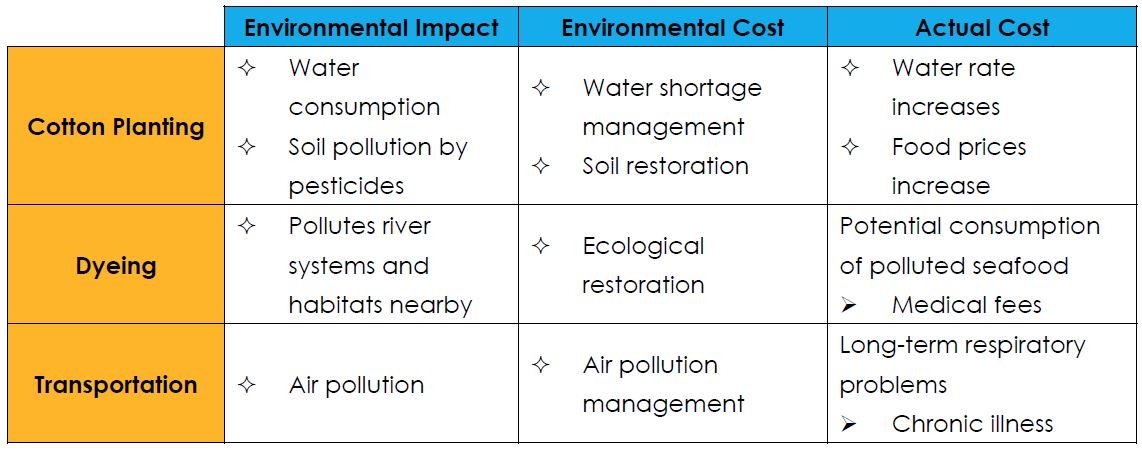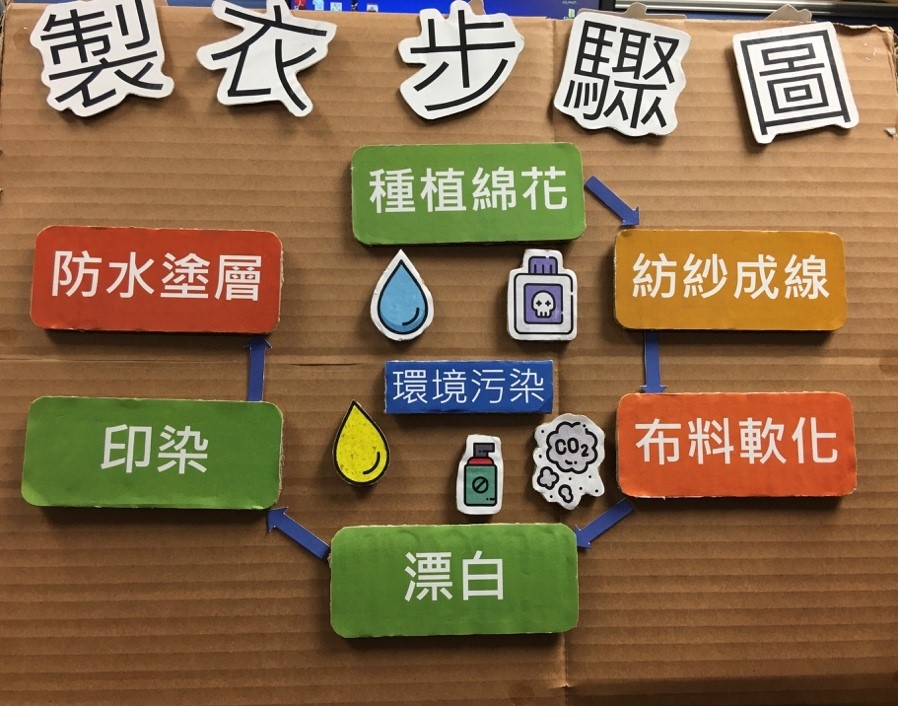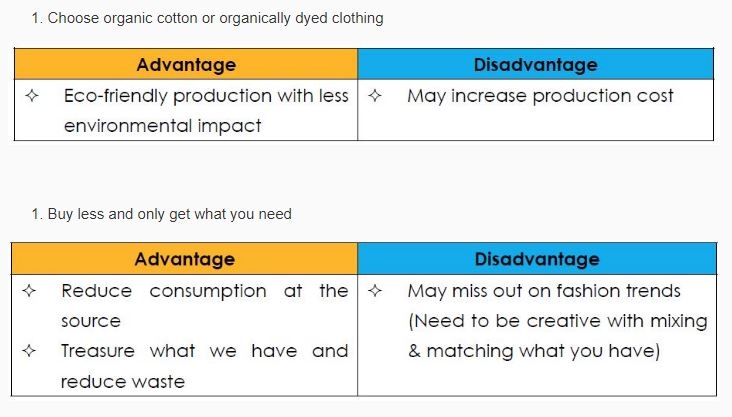Our topic today does not require textbooks, but rather focus on the issue of “money” and the value of our clothing purchase.
Firstly, there is production cost (for a non-organic production). Generally, there are 4 parts that include the shell fabric, clothing accessories, processing and sewage management. Where the clothing comes from may affect its production cost, which is also reflected by the retail price:

However, does the retail price truly reflect all the production costs? The answer is usually a no as there are many hidden costs such as “Environmental Cost” and “Actual Cost”. Basically, it means the pollution that damages the environment as well as the eco-system caused by economic activities:


Some may think it’s an overstatement and are not convinced by the magnitude of such environmental impact brought on by our clothing purchases. However, there is no exaggeration as we can refer to the environmental, social and economic costs from natural disasters such as Typhoon Mangkhut from 2018, which accounted for more than money and dollars. The increased frequency of natural disasters also relates to human activities. Those who considered themselves as a fashion trend follower who enjoy seasonal fashion and shopping across the globe should pay extra attention to the issue. Nowadays, a clothing item may cost HK$50-300, but the environmental cost from producing such item is usually far more than the amount we paid and the impacts and consequences are often enduring or even irreversible. Humans are also part of the earth’s eco-system and we are inflicting damages to ourselves inadvertently. Would future disasters (natural or man-made) spare us from potential devastation? Probably not. So it’s up to us to change our consumption behaviors for the sake of the environment!
It’s also the reason why environmental enthusiasts have been promoting local organic products and the green lifestyle over the years. A chemical-free production process is much more sustainable and so as the adoption of organic cotton and organic farming. Hence, if you care about the future generations, please consider organic products and/or buy local whenever possible! Here are a few examples of how we may change our shopping habits:

To sum up, the adoption of a greener lifestyle is not only an attitude but a commitment to the future generations. However, no one can be forced to change his/her own lifestyle so it’s up to ourselves to do more and think about the environment. At the end of the day, the true value of our clothing purchase rests on the shoulders of each and every one of us.

